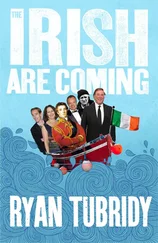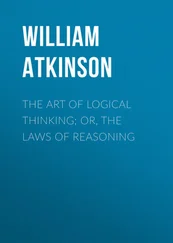Stark sent an advance detachment of two hundred men to the peninsula, then tarried long enough at a house converted into an armory for the rest of his force to draw ammunition: fifteen balls, a flint, and a gill cup of powder—five ounces—for each musketman. Crossing the narrow isthmus shortly after two p.m., harassed with round, bar, and chain shot from Royal Navy guns, the Hampshiremen ascended Bunker Hill at a deliberate pace, then descended to the northeast lip of the peninsula. “One fresh man in action,” Stark told a captain, “is worth ten fatigued ones.” A quick glance disclosed the American peril: despite Knowlton’s deft work along the rail fence, and the hasty construction of three small triangular earthworks known as flèches closer to the redoubt, Prescott’s position could still be outflanked by redcoats advancing up the Mystic shoreline. To block the narrow, muddy beach, Stark’s men scooted down the eight-foot riverbank and quickly stacked fieldstones to build a short, stout wall. Most Hampshiremen took positions behind the fence to extend Knowlton’s line, further stuffing it with hay, grass, and stray rails. But sixty musketmen arranged themselves on the beach in a triple row behind the new barricade. There they awaited their enemy.
Thick-featured and taciturn, General Howe in the best of times was said to be afflicted by a “sullen family gloom.” He, too, needed but a glance to see his own dilemma. Landing at Morton’s Point with the second lift of six hundred infantry and artillery troops from North Battery, Howe climbed a nearby hillock as gunners shouldered their fieldpieces onto dry ground and the empty boats rowed back to Boston. “It was instantly perceived the enemy were very strongly posted,” he subsequently told London.
On his far left, rebel gunmen infested rooftops and barns in Charlestown, while up the pasture slopes, five hundred yards from where Howe stood watching with his command group, a large bastion had sprouted from the hillside. The rest of the rebel defenses came into view: the triangular flèches, several guns throwing an occasional ball inaccurately toward the British lines, and the long fence—or was it a wall?—bristling with men stripped to their shirtsleeves. The fields and pastures ended in a short plunge down to the Mystic shoreline. With more rebels clustered atop Bunker Hill and spilling across Charlestown Neck despite the naval gunfire, Howe calculated that he faced “between five and six thousand” Americans—half again their actual number. He sent a courier flying to Province House with a request that Gage send reinforcements immediately; the attack would await their arrival. Redcoats poised to march near Morton’s Point broke ranks, grounded their muskets, and sat in the grass to smoke their pipes or gobble a quick dinner of bread and salt meat.
Howe made his plan. The Mystic beach seemed a promising corridor from which to outflank and turn the rebel line. On foot, the general would personally lead the British right wing, including grenadiers assaulting the rail fence while a column of light infantry companies slashed up that river shoreline. The left wing, led by the diminutive, moonfaced Brigadier Robert Pigot, would attack the redoubt to fix the enemy in place and maybe even overrun the parapet once Howe’s troops had broken through. Celebrated for his sangfroid against the French at Quebec, the Breton coast, and Havana, Howe was quoted as telling his officers, “I shall not desire one of you to go a step farther than where I go myself at your head.” Speed, agility, discipline, and violence would be decisive. Losing Boston, he reminded them, meant moving the entire army onto Graves’s ships, “which will be very disagreeable to us all.”
Including the reserves soon to arrive, Howe commanded more than twenty-six hundred men. British field guns began popping away at three p.m., “great nasty porridge pots flying through the air & crammed as full of devils as they could hold,” as a young militiaman wrote, each ball “whispering along with its blue tail.” The bombardment so unnerved the rebel artillery battery up the slope that one American gun captain reportedly “fired a few times, then swung his hat three times round to the enemy and ceased to fire.” Regulars tamped out their pipes and shouldered their muskets, bayonets fixed. Junior officers bawled out orders. Ten companies abreast would form a broad assault front on Pigot’s wing to the left, followed by ten more, a formation mirrored by Howe’s right wing except for the light infantry column along the Mystic, necessarily squeezed into a shoulder-to-shoulder front between river and riverbank.
On order, the great mass of redcoats heaved forward with a clatter of equipment and more bawling commands, the slate-blue Charles behind them and tawny dust clouds churning up with each stride. “Push on!” the troops yelled. “Push on!” Drummers rapped a march cadence, periodically punctuated by the boom of field guns towed forward with drag ropes. Howe marched with the deliberation of a man who had done this before, his eyes on the hillside ahead, trailed by aides, staff officers, and an orderly said to have carried a silver tray with a decanter of wine. Watching from the redoubt as this red tide advanced, Captain Ebenezer Bancroft of Dunstable, Massachusetts, would give voice to every patriot on the battlefield: “It was an awful moment.”
The moment grew more awful. For two months, Admiral Graves had longed to rain destruction on rebel heads, and while Howe drafted his plan on Morton’s Point, the admiral arrived by barge to note the hazard that enemy snipers in Charlestown posed to Pigot’s left flank. Did General Howe wish “to have the place burned?” Graves asked. As a precaution, brick furnaces aboard several warships had prepared all morning to heat cannonballs. General Howe indeed wished it so. A midshipman hurried to relay the order, and fiery balls soon fell on Charlestown like tiny meteors. Worse destruction came from Copp’s Hill in the North End, where early Boston settlers had once sought refuge from the “great annoyances of Woolves, Rattle-snakes, and Musketos.” British troops had muscled mortars and several mammoth 24-pounders to the edge of the ancient burying ground at Snow and Hill Streets, sixty feet above the Charles. While Generals Clinton and Burgoyne watched, gunners loaded combustible shells known as carcasses, each packed with gunpowder, Swedish pitch, saltpeter, and tallow. The Charlestown meetinghouse, with its slender, towering steeple, provided a conspicuous aiming stake.
The first shell fell short, bursting near the ferry slip. Gunners corrected their elevation, and within minutes “the whole was instantly in flames,” Burgoyne would write. Fire loped through Charlestown’s streets like a thing alive, igniting buildings at the foot of Chestnut Street and around Mauldin’s shipyard. Other structures along the docks followed in quick succession: distilleries, a tannery, warehouses, shipwrights, a cooperage. Fire climbed the pitched roofs—a “grand and melancholy sight,” one loyalist observed—then licked through houses away from the waterfront and up to the marketplace, incinerating the courthouse and the Three Cranes Tavern. North of the market, on Town Hill, more houses and another distillery caught fire. The light breeze shifted from southwest to east, as it often did on fine summer days, and flames drove lengthwise through Charlestown. Fire ignited more wharves and a ship chandlery. Ebony smoke rose in a column as wide as the town, then “hung like a thunder cloud over the contending armies,” an American officer reported. Rebel musketmen scurried from the burning buildings to hide behind stone walls on Breed’s Hill and in a nearby barn.
“The church steeples, being made of timber, were great pyramids of fire above the rest,” wrote Burgoyne, who had a way with words. “The roar of cannon, mortars, musketry, the crash of churches, ships upon the stocks, the whole streets falling together in ruin, to fill the ear.” All in all, the conflagration was “one of the greatest scenes of war that can be conceived.”
Читать дальше












